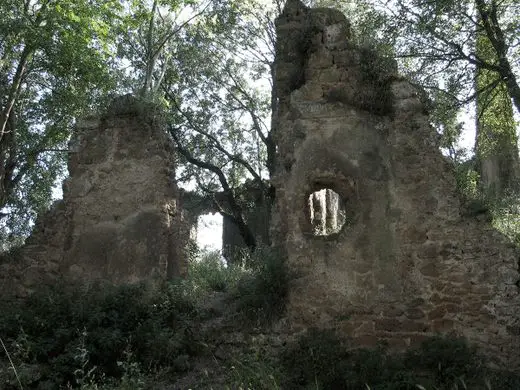Monterano, a ghost village nestled on a tuff hill in the Monterano Nature Reserve, captivates visitors with its ancient ruins and scenic location near Rome and Lake Bracciano. This deserted town has gained fame for its historical significance and its cinematic connections to Cinecittà.

Dating back to the Bronze Age, Monterano thrived in the Etruscan era. Known as “Manturanum” during Roman times, it later regained influence in the Middle Ages, leaving behind remnants like a portion of the Roman aqueduct, which still stands today.

At the center of Monterano, the imposing castle tells a story of evolution through the ages. In 1679, Prince Altieri commissioned the esteemed artist Gian Lorenzo Bernini to transform the stronghold into a Baroque palace, complete with a magnificent fountain adorned with a lion statue.

The nearby San Bonaventura Monastery, also attributed to Bernini’s vision and executed by Mattia de Rossi, remains a striking feature on the outskirts of the town.

_-_mon.jpg/:/rs=w:1280)
Monterano’s decline began with shifts in trade routes and local power struggles. In 1799, following a conflict between local families, the French army pillaged the town, and a subsequent malaria outbreak devastated the population. The severe actions of the French soldiers forced residents to abandon their homes, seeking new beginnings elsewhere.

Over time, Monterano’s ruins have become beautifully weathered, serving as the setting for various films, such as Ben-Hur (1959) and Brancaleone alle Crociate (1970).


Know Before You Go: From Rome, head towards Lake Bracciano on the SP493 (Cassia Braccianese). Follow signs to Canale di Monterano, located just 2 km from the ruins.

